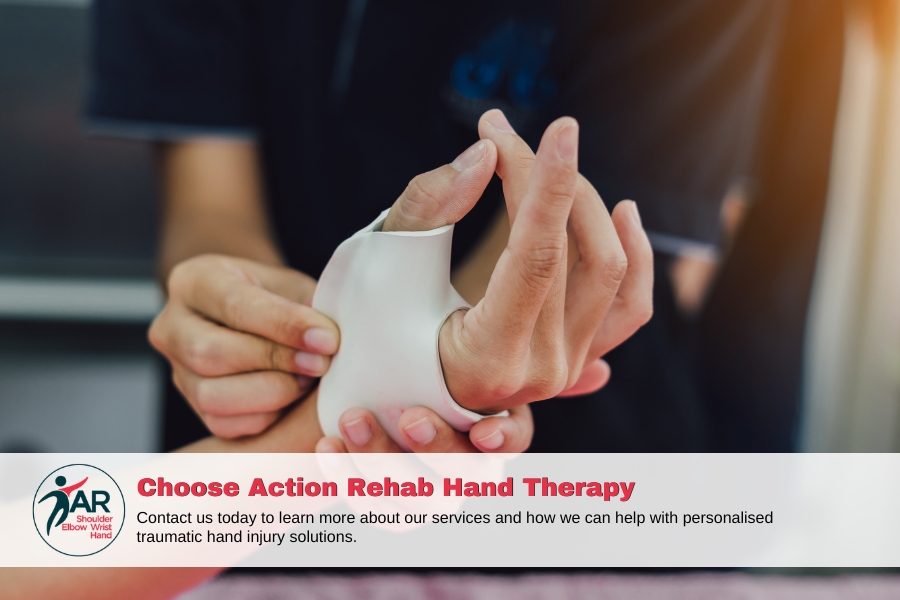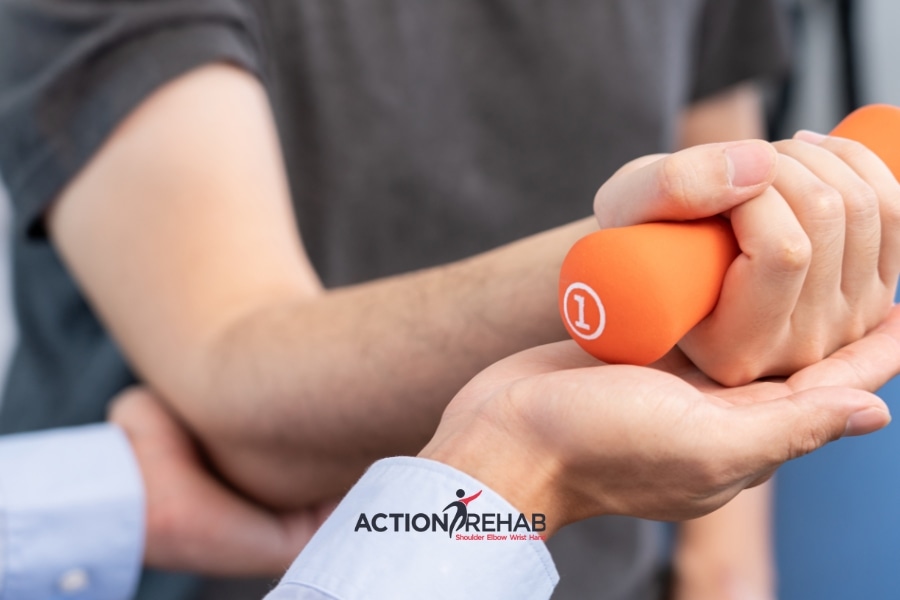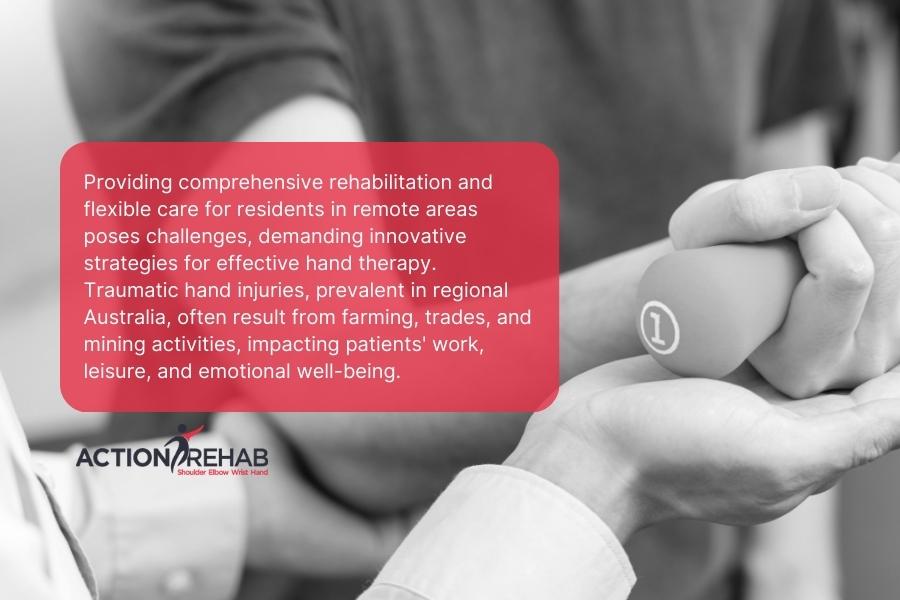Breaking Barriers: Comprehensive Hand Therapy Solutions in Regional Australia
Provision of appropriate and comprehensive rehabilitation and flexible care for residents in regional/ remote areas of Australia post traumatic injuries can be challenging and limiting due to the issues surrounding access to medical care and services. Current protocols and methods of care used in metropolitan locations are not as effective in rural locations and innovative strategies are required to be able to provide necessary care. A collaborative and flexible rehabilitation program is essential to the provision of appropriate hand therapy for residents of rural locations.
What is a traumatic hand injury?
Traumatic injuries to upper limbs can involve damage to several structures including soft tissue, bone, nerve and skin. Short- and long-term impairments can range from stiffness and pain, to loss of movement and strength (Kingston, 2017). Timeframes in which these injuries can vary greatly, some lasting for years and having lifelong impacts on a person’s ability to function in their day-to-day life.
In regional Australia, causes of these types of injuries often occur in farming, trades and mining. Falls from animals and motorbikes are also common (Australia Safety and Compensation Council, 2008). Men are at an increased risk of presenting with these types of injuries (Hill, Riaz, Mozzam & Brennan, 1998).
Impact of traumatic hand injuries in Regional Australia
These area’s most effected in patients’ everyday lives post traumatic hand injuries are work and leisure (Kingston, 2017). Along with this, an impact on a patient’s emotional well-being can also be seen. In regional locations a focus on function can often be seen over comfort.
An importance is seen in a person’s ability to return to work over general dysfunction (Kingston, Judd & gray, 2014). This can lead to an avoidance of seeking medical treatment if it prevents their ability to work and complete tasks, which can be a contributing factor to poorer health outcomes when compared to metropolitan counterparts.
Accessibility to hand therapy for rural patients with traumatic hand injury
These personal factors are compounded by the reduced access rural patients have to medical and health care. Many traumatic injuries result in long distance travel to see the appropriate medical specialists for initial treatment. Due to geological isolation, many are referred to their local allied health teams for ongoing rehabilitation (Kingston, Williams, Judd & Gray, 2016). However, due to a lack of services, resources and time, many patients are still required to travel long distances to receive the necessary care they need. Working collaboratively with metro-based services to ensure appropriate hand therapy is provided in a timely manner is vital to ensuring the best outcomes for patients, whilst providing manageable and reasonable rehabilitation to rural patients in which they will be happy to participate. Flexible care is vital to participation in regional settings and ensuring positive outcomes.
Due to the lifestyles seen in regional patients, and emphasis in put onto returning function, and in some cases, preserving surgical interventions over a focus on participating in daily activities (Kingston, 2017). This is due to patients finding that many protocols for treatment of injuries do not fit into their daily lives. Many patients highlight that completion of home exercise programmes are not seen as valuable as completion of chores and daily activities are seen as more important and are often traded for the recommended exercises provided by hand therapists (Kingston, 2017).
Final thoughts on providing effective hand therapy rehabilitation in Regional Australia
Hand therapists in regional areas are required to work closely with patients to identify risk factors that will inhibit treatment and work collaboratively with patients to ensure that treatment is meeting physical, emotional and practical needs of patients.
Incorporating home exercise programs into daily activities, highlighting times in which they can be completed, and providing alternative ways in which to complete daily activities are essential in working with rural patients to get the best outcomes (Kingston, 2017). With this, education for patients is vital.
Hand therapists can provide essential information and advice regarding injuries and outcomes, including long-term impacts on function if mismanaged, and alternative ways to treat. Telehealth is an increasingly popular method of therapy for patients in rural areas and can be vital in ensuring that the necessary care for patients is provided in a timely manner.

References
- Australia Safety and Compensation Council. (2008). WORK-RELATED HAND AND WRIST INJURIES IN AUSTRALIA (pp. 1-68). Australian Governement.
- Gustafsson, M., & Ahlstrom, G. (2004). Problems experienced during the first year of an acute traumatic hand injury – a prospective study. Journal Of Clinical Nursing, 13(8), 986-995. doi: 10.1111/j.1365-2702.2004.01019.x
- HILL, C., RIAZ, M., MOZZAM, A., & BRENNEN, M. (1998). A Regional Audit of Hand and Wrist Injuries. Journal Of Hand Surgery, 23(2), 196-200. doi: 10.1016/s0266-7681(98)80174-5
- Kingston, G. (2017). Commentary: Rehabilitation for Rural and Remote Residents Following a Traumatic Hand Injury. Rehabilitation Process And Outcome, 6, 117957271773420. doi: 10.1177/1179572717734204
- Kingston, G., Judd, J., & gray, m. (2014). The experience of living with a traumatic hand injury in a rural and remote location: an interpretive phenomenological study. Rural And Remote Health. doi: 10.22605/rrh2764
- Kingston, G., Tanner, B., & Gray, M. (2010). The functional impact of a traumatic hand injury on people who live in rural and remote locations. Disability And Rehabilitation, 32(4), 326-335. doi: 10.3109/09638280903114410
- Kingston, G., Williams, G., Judd, J., & Gray, M. (2016). The functional impact of a traumatic hand injury: a comparison of rural/remote and metropolitan/regional populations. International Journal Of Therapy And Rehabilitation, 23(9), 406-413. doi: 10.12968/ijtr.2016.23.9.406




















